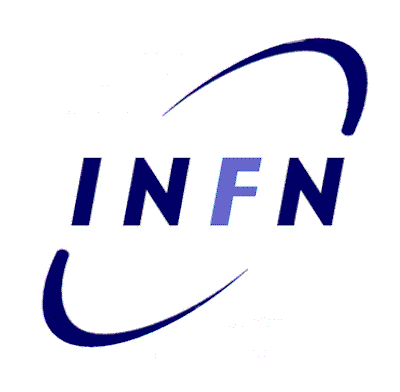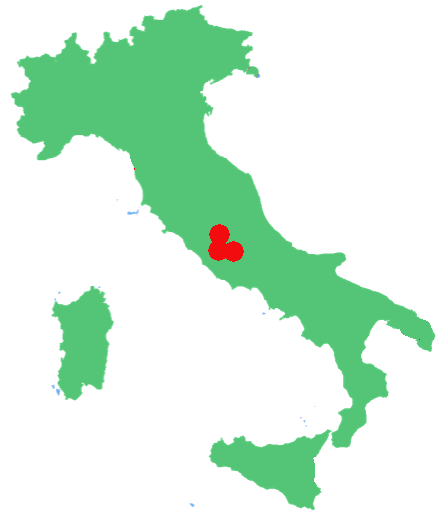Scientific activities of the various Research Units
Roma 1 - "La Sapienza"
- We computed the QCD+QED corrections to pion and kaon masses and the value of the Dashen's theorem breaking parameter; we also updated our previous QCD isospin breaking results for the kaon decay constant, the form factors of semileptonic Kl3 decays and neutron–proton mass splitting using the unquenched simulations of the European Twisted Mass Collaboration (ETMC) with Nf=2 dynamical fermions. We are now working on the first non-perturbative lattice calculation of the QED radiative corrections to leptonic and semileptonic decay rates of pseudoscalar mesons. An exploratory study for the non-perturbative computation of the mass difference DMK has been performed. It consists in the calculation of the (non-exponential) finite-volume corrections relating the results obtained on a finite lattice to the physical values. The study of the "chromomagnetic" operator on the lattice has been pursued. This operator is contained in the strangeness-changing effective Hamiltonian which describes electroweak effects in the SM and beyond.(Guido Martinelli)
- The investigation of the classification of infinitely heavy colour source states in pure Yang-Mills Theory in Temporal Gauge (Polyakov Loops) has being pursued with numerical Montecarlo methods. This research is new and preliminary results have been presented by Guerrieri at Lattice 2013 in the poster session (qq¯-potential: a numerical study A.L.Guerrieri, S.Petrarca, A.Rubeo, M.Testa arXiv:1311.1325v1 [hep-lat]). (Silvano Petrarca, Massimo Testa)
Roma 2 - "Tor Vergata"
-
ISOSPIN BREAKING
We computed the QCD+QED corrections to pion and kaon masses and the value of the Dashen's theorem breaking parameter; we also updated our previous QCD isospin breaking results for the kaon decay constant, the form factors of semileptonic Kl3 decays and neutron–proton mass splitting using the unquenched simulations of ETMC with Nf=2 dynamical fermions. We are now working on the first non-perturbative lattice calculation of the QED radiative corrections to leptonic and semileptonic decay rates of pseudoscalar mesons. We are also working, in collaboration with the CERN group, to a first-principle local definition of QED on a finite volume. -
TETRAQUARKS
Motivated by the observation of new hadronic resonances that can be possibly described as tightly bound tetraquark states, we studied the hypothetical existence of flavored, doubly charmed, tetraquarks, how they could be produced at LHC, and how to interpolate them on the lattice. -
b PHYSICS
We obtained results a precise lattice QCD determination of the b-quark mass, of the B and Bs decay constants and first results for the B-meson bag parameters for SM and beyond. For our computation we employ the so-called ratio method and improved interpolating operators. With these results for the bag parameters we refined the Unitarity Triangle analysis, improving the bounds coming from (B − Bbar) mixing. -
Light and charm PHYSICS
We obtained lattice QCD determination of the average up-down, strange and charm quark masses based on simulations performed by the ETMC with Nf =2+1+1 dynamical fermions. We obtained the pseudoscalar decay constants and the matrix elements of the operators describing neutral K and D mixing in the SM and extensions. -
NEW SIMULATIONS
We performed new simulations using maximally twisted mass Wilson fermions at the physical point, where the lattice action includes clover and twisted mass terms. -
CHROMOMAGNETIC OPERATORS
We study matrix elements of the "chromomagnetic" operator on the lattice. This operator is contained in the strangeness-changing effective Hamiltonian which describes electroweak effects in the SM and beyond. -
NEW MECHANISM of DYNAMICAL MASS GENERATION
We proposed a non-perturbative mechanism for fermion mass generation, which should arise from a phenomenon of spontaneous chiral symmetry breaking, triggered by the occurrence of a critical Wilson-like term in the action. The mechanism is under study by means of numerical Monte Carlo simulations.
Roma 3
- We obtained, by using the gauge configurations produced by ETMC with Nf=2 dynamical quarks, the first unquenched, continuum limit, lattice QCD results for the matrix elements of the operators describing neutral B-meson oscillations in the extensions of the Standard Model.
- We computed the QCD+QED corrections to pion and kaon masses and the value of the Dashen's theorem breaking parameter; we also updated our previous QCD isospin breaking results for the kaon decay constant, the form factors of semileptonic Kl3 decays and neutron–proton mass splitting using the unquenched simulations of ETMC with Nf=2 dynamical fermions. We are now working on the first non-perturbative lattice calculation of the QED radiative corrections to leptonic and semileptonic decay rates of pseudoscalar mesons.
- We determined, analyzing data obtained within two PRACE projects based on the ETMC Nf=2+1+1 gauge configurations, the light, strange and charm quark masses as well as the decay constants of K- and D-mesons, and we are finalizing the analysis of the vector and scalar form factors entering the semileptonic Kl3 decay, relevant for the determination of the Cabibbo angle.
- We analyzed the renormalization pattern of the chromomagnetic operator and for the first time we removed non-perturbatively the power divergent mixing of the chromomagnetic operator with the scalar density. This allowed us to extract the matrix elements of the chromomagnetic operator between kaon and pion states, which are relevant for the analysis of electroweak effects in strangeness changing processes within the SM and beyond.
- We are also contributing actively to the Flavor Lattice Averaging Group, which aims at making lattice results accessible to the Flavor Physics community and has published two reviews till now.
^ Back to Top


